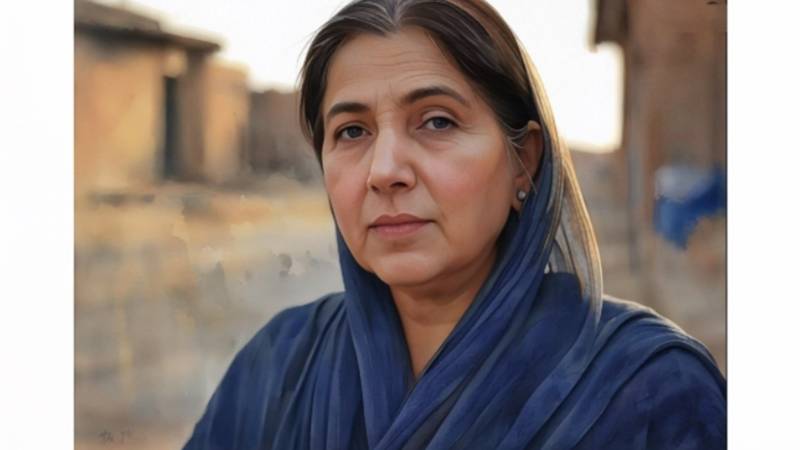
In any community there are bizarre and unpleasant things that startle us and tug on our conscious. Most of the time, they are covered up with the veneer of religion and often justified as part of cultural norms. In such aberrations, women are often at the receiving end.
I am going to narrate a true story from the deep recesses of my brain. I tried to forget it but somehow a reminder of the unfortunate incident brings back – like a mountain torrent – the intolerance and ugliness of some of the cultural underpinnings of our Pakistani/Pashtun/Peshawari culture.
There lived in our neighbourhood a shopkeeper, Haji Abdul Majid, who had a flourishing hardware business in the city centre. He lived with his extended family in a large house. His younger grandson was my classmate in high school.
Abdul Sattar was the elder of two sons of Haji Abdul Majid. Haji Sahib had in his life approved the marriage of Sattar with his cousin Nadia. Her mother and Sattar’s mothers were sisters. It was closely-knit family.
Nadia was a marginally educated beautiful girl, who went to primary school but for a few years. Keeping with the prevailing traditions of the family, when Nadia was eight-years-old and was at an age to start observing purdah, the family decided she should stay home and learn to clean, sew and cook – and she became good at those chores. Her mother would often tell her that she would make an excellent wife, and any man would be lucky to marry her.
That lucky man was Abdul Sattar. Marginally educated, Sattar was business savvy and helped grow his father’s business. Theirs was a well-established hardware business near the Clock Tower in the centre of the city.
When Nadia was fifteen she was married to Sattar who was a few years older. It was a memorable marriage in which Sattar’s father invited more than 500 guests to valima- the wedding feast. The whole neighbourhood was decked with buntings and small festive flags. In the main street, arches were made with bamboos and decorated with green foliage and strings of colourful electric lights. As was the tradition in the city, neighbours made their ground floors available to accommodate valima guests. Marriage festivities went on for days.
Nadia fitted nicely into her new family. Her mother-in-law, who was also her aunt, adored the girl for bringing much happiness to the family. Slowly Nadia started doing household chores, spending more time in the kitchen and responded to the needs of her husband. In Peshawar city culture, the newlywed brides took their time to start household chores. But Nadia discarded her wedding clothes after a week and started acting as a functional member of the family.
The patriarch of the family Haji Abdul Majid became ill within a month of his son’s marriage. The family consulted Dr Ram Saran in charge of the government dispensary across from Gunj Ali Khan Mosque. The doctor gave him an injection and a bottle full of pink liquid medicine and assured the worried family that he was still under stress from his son’s wedding, and he would soon be his old self. Bed rest, avoiding red meat and hot chilies would improve his health. The same day, however, in the middle of the night, he clutched his chest and within an hour he was gone.
An uneasy truce prevailed where Nadia slept in her mother-in-law’s room, washed and ironed her estranged husband’s clothes, did the cooking and cleaned the house
The family was stunned. However, after the obligatory mourning for 40 days, they got back into the rhythm of running the business maintaining the house. Sattar assumed charge of the hardware store and asked his younger brother Jamil to help at the store after school. Within a year of her marriage, Nadia gave birth to a girl that became the apple of her father’s and grandmother’s eyes.
On rare occasions, Nadia would go to visit her family for a few days. She would always seek permission for such visits from her mother-in-law and her husband.
In families where brides are forced to serve other family members, the mother-in-law instead of saying ‘no’ would put obstacles in the way of her daughter-in-law. Here is a short Hindko poem describing the obstacles placed in the way of a daughter-in-law.
جا ووٹی تو جم جم جا
گھڑا گرولی بھر کے جا
بیری دے پتر گن کے جا
آسمان دے تارے گن کے جا
جا ووٹی تو جم جم جا
(O my dear bride,
Yes, you may visit your family.
But there are some chores you must attend to first.
Make sure all the water cisterns are filled,
The leaves on the fruit tree in the yard are counted.
And yes, don’t forget to count the number of stars in the night sky.
Then you may visit your parents)
Nadia did not face such difficulties. She was permitted to visit her parents as often as she wished.
On one such visit, Nadia’s family had out-of-town visitors that were related to Nadia’s father. Among the visitors were two teenage boys and a girl aged twelve. The family had recently acquired a Kodak Brownie box camera. They posed for each other and one photo captured Nadia with the two teenage boys.
Hell broke loose when Sattar saw the photo. He became angry beyond words and in a fit of anger threatened to divorce Nadia. To Sattar, it was a betrayal of trust that his wife had a picture taken with two strangers
It was a custom in Peshawari culture that womenfolk did not venture out of their homes and would not talk or be seen with strangers or na-mahram men. Although the boys in the photo were well known to Nadia’s family, they were total strangers to Sattar. Even Sattar’s mother tried to reason with her son, but he refused to either forget or forgive.
A divorced woman in that society in the 1950s had a terrible life. No matter what the reason, it was always the woman who was blamed. Many divorced women came back to their parents’ home and many of them lived out their lives serving the family. In that culture, remarriage was always out of question. Those women were considered damaged goods, and no one was willing to marry one.
Nadia knew the perils of divorce. She begged her husband not to divorce her. She said she would stay in his home as a servant and would not ask anything in return. An uneasy truce prevailed where Nadia slept in her mother-in-law’s room, washed and ironed her estranged husband’s clothes, did the cooking and cleaned the house. The only love she received was from her mother-in-law and her infant daughter. To the outside world, she was still happily married to Sattar, but in fact the situation was just the opposite.
Their daughter Bano grew up in that ambiguous arrangement. The father loved his daughter, but she must have noticed lack of intimacy between her parents. When she was 5 years old, she was enrolled in a primary school near their home where my younger sister was her classmate and later a close friend. Both my sister and Bano were married off when they were 15-years old, interrupting their schooling. However, they remained lifelong friends.
In due course, Sattar and his mother died. Nadia also followed them and Sattar’s younger brother became the sole proprietor of the family business.
This story was related to me by my sister. When the main characters were living, no one outside the immediate family knew about the bizarre arrangements in that household.
Looking from the vantage of present, it looks strange and cruel that a husband was at the verge of divorcing his wife for such a trivial reason. But in those days, it was not unusual for things to unfold and end in divorce, and eventually to ruining the life of a girl. Or in some cultures, it was possible to go so far as killing a woman to redeem the so-called honour of the man and his family. In the tribal culture of yore, a husband would kill his wife for minor digressions. It was expected and sanctioned by the society. And religion looked the other way.
Nadia’s story is not unique. In one way or the other, women have been subject to subjugation throughout human history. In patriarchal societies, it is the man who determines what privileges women should have. Unfortunately, women education has not erased the discrepancies that women face in a society.
The roots of the subjugation of women go back 14,000 years ago in the Near East.
It was widely practiced in almost all societies in the world. Even a cursory glance at the present landscape show that women are kept lagging behind in all parameters in a society.
Bano, the only daughter of Nadia and Sattar and a good friend of my sister, died a few years ago. Unlike her mother, Bano was happily married, had children and died of natural causes in her mid-70s. Her mother, however, remained unfulfilled and unhappy all her life.

